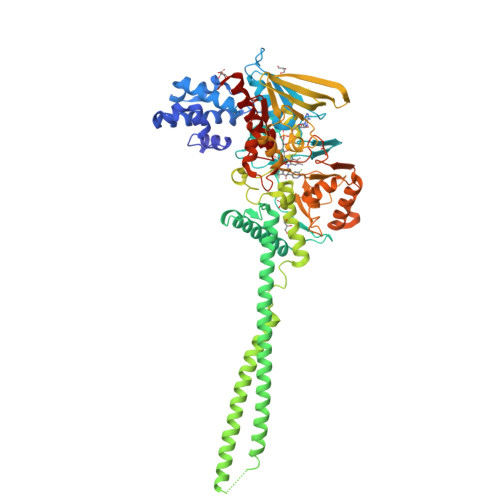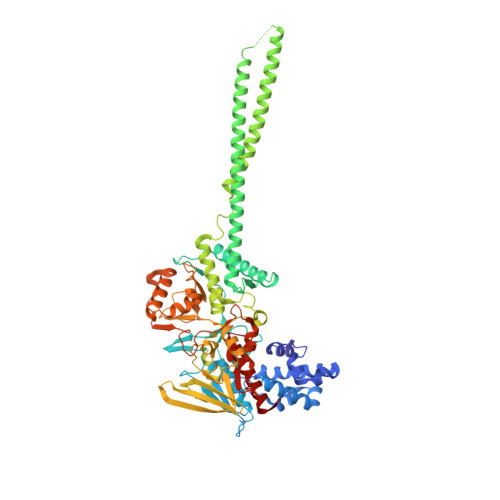Design and Synthesis of Tranylcypromine-Derived LSD1 Inhibitors with Improved hERG and Microsomal Stability Profiles.
Koda, Y., Sato, S., Yamamoto, H., Niwa, H., Watanabe, H., Watanabe, C., Sato, T., Nakamura, K., Tanaka, A., Shirouzu, M., Honma, T., Fukami, T., Koyama, H., Umehara, T.(2022) ACS Med Chem Lett 13: 848-854
- PubMed: 35586426
- DOI: https://doi.org/10.1021/acsmedchemlett.2c00120
- Primary Citation of Related Structures:
7VQS, 7VQT, 7VQU - PubMed Abstract:
Lysine-specific demethylase 1 (LSD1/KDM1A) is a promising therapeutic target for the treatment of cancers. Several derivatives of tranylcypromine ( trans- 2-phenylcyclopropylamine) have been developed as LSD1 inhibitors. One such derivative is S2157 ; however, this compound has a high hERG channel inhibitory activity and a low microsomal stability, making it unsuitable as a drug candidate. Here, using an in silico hERG inhibition prediction model, we designed, synthesized, and evaluated a novel series of S2157 derivatives characterized by modifications of the benzyloxy and piperazine groups. Among the synthesized derivatives, a compound possessing 2-fluoropyridine and 2,8-diaza-spiro[4.5]decane groups (compound 10 ) showed the most desirable activities, and its eutomer, S1427 , was isolated by the optical resolution of 10 . In addition to potent LSD1 inhibitory activity, S1427 exhibited desirable hERG channel inhibition and microsomal stability profiles.
Organizational Affiliation:
Drug Discovery Chemistry Platform Unit, Drug Discovery Seed Compounds Exploratory Unit, Chemical Genomics Research Group, RIKEN Center for Sustainable Resource Science, 2-1 Hirosawa, Wako, Saitama 351-0198, Japan.






















